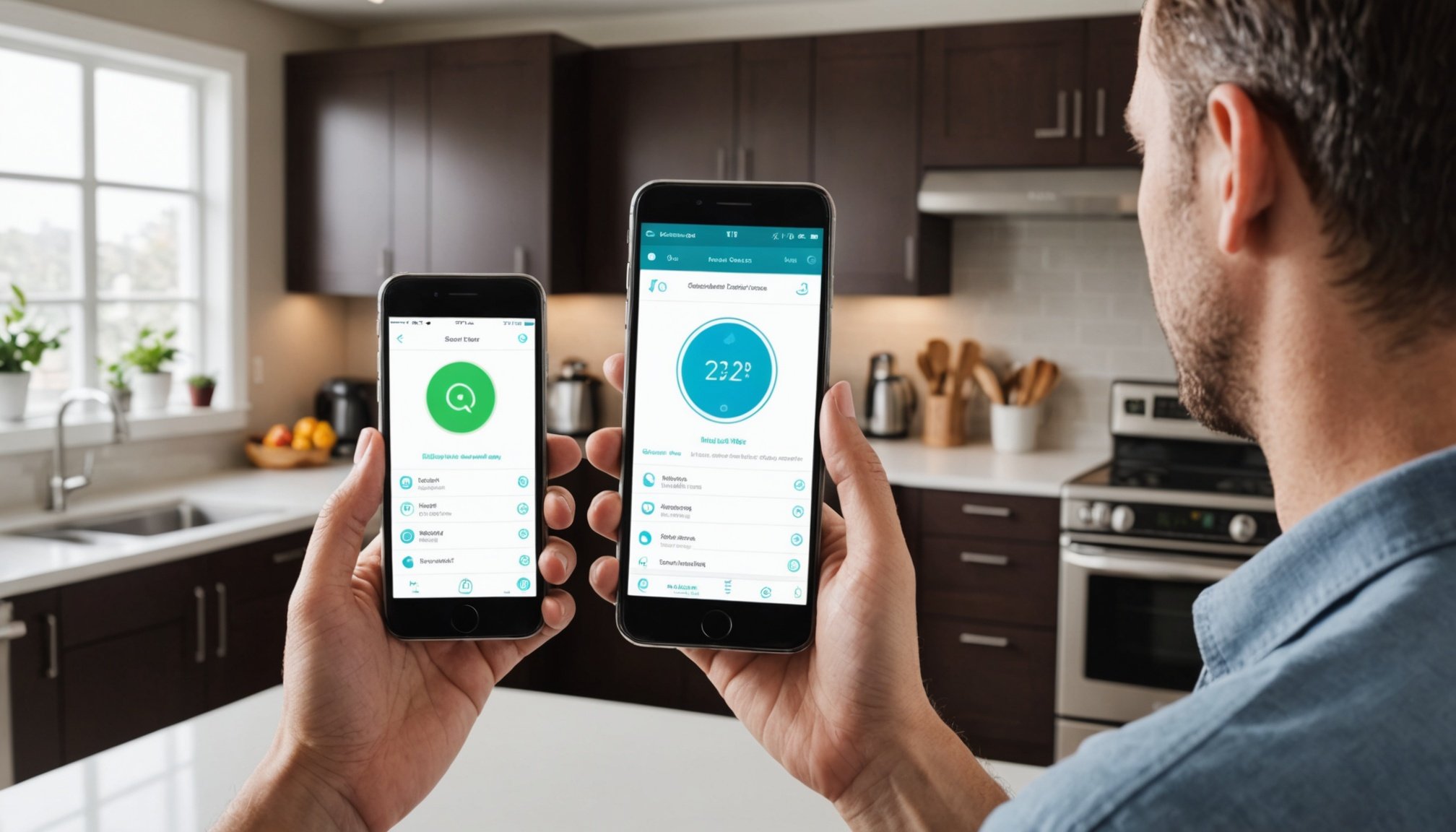Understanding Smart Home Technology
Smart home technology is revolutionising the way we interact with our living spaces, offering a seamless blend of convenience and efficiency. This technology integrates various devices through a network, allowing for effortless control and automation of sensors, appliances, and systems. This transition from traditional setups to smart solutions can significantly enhance the ease of managing daily tasks and energy consumption.
Voice control has emerged as a pivotal feature in modern home automation. Devices like smart speakers allow homeowners to operate lighting, adjust thermostats, or even schedule reminders using simple voice commands. This hands-free approach not only makes day-to-day life more straightforward but also supports accessibility needs.
Also read : Step-by-step smartphone setup for your smart video doorbell: the complete installation guide
Moreover, smartphones play a crucial role as central hubs within the ecosystem of smart home technology. They enable users to control and monitor various systems remotely, through a single interface, bringing all devices under one unified control structure. The convenience of managing home automation systems from anywhere enhances security and user comfort. As smart home technology evolves, its integration into daily life becomes more extensive, simplifying complex processes and enriching your home environment.
Setting Up Your Smart Home Devices
Creating a cohesive smart home ecosystem begins with device compatibility. Choosing compatible devices is essential to ensuring your gadgets work seamlessly together. To start, identify the hub or platform you want to core your system around. Popular options include Amazon Alexa, Google Assistant, and Apple HomeKit. Once the hub is chosen, select devices certified to work with it, such as smart bulbs, thermostats, or security cameras.
Also read : Empowering elderly care: transform your smartphone into a smart home management hub
When setting up your smart home devices, ensure they are within a compatible ecosystem. This guarantees efficient communication between devices. Manufacturers often have a list of compatible devices, so check this before purchasing. Installing an illuminating smart bulb but learning it’s incompatible with your chosen hub could cause frustration.
After selecting the gear, connect each device to your smartphone. This step is crucial for easy control and management. Use the hub’s app to add devices, establish scenes, and schedule operations. Linking gadgets to your phone not only simplifies hands-on control but also allows for remote operation, enhancing convenience. This structured approach, focusing on compatibility and a uniform ecosystem, streamlines the setup, making your smart home both efficient and intuitive.
Configuring Voice Control Features
In today’s smart homes, voice control features are becoming increasingly vital. They offer a seamless experience by using digital assistants and voice commands to control various devices.
Selecting a Digital Assistant
When choosing digital assistants, it’s essential to consider your device compatibility. Popular options include Amazon’s Alexa, Google Assistant, and Apple’s Siri. Each has unique features, so evaluate which aligns best with your voice control needs.
Setting Up Voice Commands
After selecting, set up your voice commands to ensure smooth operation. Most devices provide an app or settings menu that allows you to input and manage these commands easily. For instance, you could say, “Hey Siri, turn on the living room lights,” and the corresponding action should occur. By personalising these commands, you maximise the functionality of your digital assistant.
Customizing Voice Control Settings
For a more tailored experience, customize your voice control settings. Most digital assistants allow you to adjust settings such as voice recognition sensitivity, preferred language, and response feedback. This customization ensures that your voice commands are understood accurately, enhancing the efficiency of your smart home system. Adjusting settings gives you control that fits your personal preferences.
Best Practices for Optimizing Smart Home Voice Control
Enhancing the user experience with smart home voice control can transform the way household devices are managed. To optimize smart home systems, begin by ensuring effective voice recognition. This involves calibrating your voice assistant to accurately interpret various accents and speech patterns. Users should regularly update their devices to take advantage of improvements in voice recognition technology.
One of the most critical voice control tips is the importance of clear command phrasing. Utilizing straightforward language and avoiding unnecessary words can improve response accuracy. For instance, instead of saying, “Can you please turn down the volume?”, you might instruct, “Volume down”. This succinct approach maximizes efficiency.
Despite advancements, common pitfalls persist, such as ambient noise interference. To minimize such issues, consider positioning your smart speaker in an area with minimal background noise. Additionally, users often experience frustration due to misunderstood commands. Overcoming this involves familiarizing yourself with the specific command structures of your devices. For example, use specific brand terms which might be more effective than general commands in some systems.
By adopting these practices, users can significantly enhance the reliability and enjoyment of their voice-controlled smart home devices.
Troubleshooting Common Issues
Encountering voice control problems with your smart devices can be frustrating, but solutions are often straightforward. Start by checking the microphone on your device; dust or debris can obstruct sound. Ensure that your device recognizes voice commands by recalibrating the software or adjusting sensitivity settings.
If connectivity problems arise, confirm that your smart device is connected to the correct Wi-Fi network. Inconsistent internet can lead to disconnection issues. Reboot your router or device to reestablish connection. Verify that your device’s firmware is up-to-date, as outdated software can lead to malfunctions.
Maintaining software updates is critical for device compatibility and performance. Updates often contain bug fixes and enhancements that can resolve existing issues. Check for updates regularly through your device settings or manufacturer’s app.
When troubleshooting, consult the user manual for specific guidance related to your device. If problems persist, contact customer support for further assistance. They can provide solutions tailored to your particular issue.
Remember, many problems are quickly solvable with systematic checks and updates, ensuring your smart device functions seamlessly with minimal interruptions.
Recommended Smart Home Devices for Voice Control
Voice control has transformed how we interact with our smart home devices, making the experience seamless and intuitive.
Smart Speakers and Hubs
At the core of any efficient voice-controlled smart home are smart speakers and hubs. These devices act as the central point for connecting and controlling various appliances through voice commands. Popular options often include well-known models that integrate with a wide range of appliance compatibility, ensuring you get the most out of your setup. With their cutting-edge technology, these devices streamline processes from playing music to controlling lights with simple voice inputs.
Compatible Appliances
When setting up a voice-controlled home, ensuring appliance compatibility is crucial. Many household items, like lighting, thermostats, and even kitchen gadgets, can now be connected to your voice hub. These devices represent the forefront of smart technology, effortlessly responding to commands. By focusing on appliances that sync seamlessly with smart hubs, users can enjoy a truly integrated home experience.
High-Rated Voice Control Devices
To enhance your voice-controlled environment, consider investing in some top high-rated voice control devices. These highly recommended products are known for their excellent functionality and ease of use. With their highly efficient voice recognition capabilities, they offer an unmatched level of convenience and reliability.






